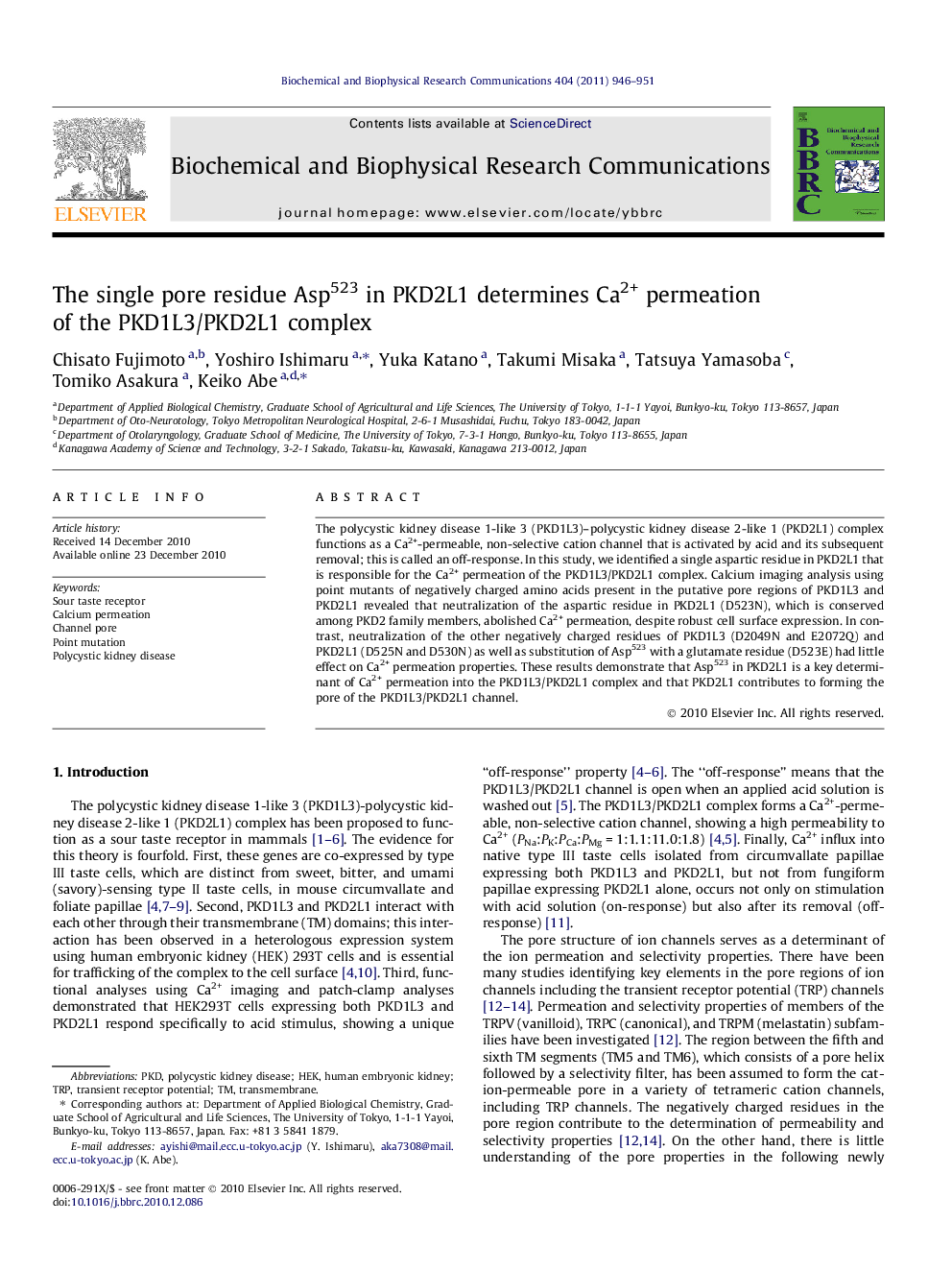| Article ID | Journal | Published Year | Pages | File Type |
|---|---|---|---|---|
| 1931262 | Biochemical and Biophysical Research Communications | 2011 | 6 Pages |
The polycystic kidney disease 1-like 3 (PKD1L3)–polycystic kidney disease 2-like 1 (PKD2L1) complex functions as a Ca2+-permeable, non-selective cation channel that is activated by acid and its subsequent removal; this is called an off-response. In this study, we identified a single aspartic residue in PKD2L1 that is responsible for the Ca2+ permeation of the PKD1L3/PKD2L1 complex. Calcium imaging analysis using point mutants of negatively charged amino acids present in the putative pore regions of PKD1L3 and PKD2L1 revealed that neutralization of the aspartic residue in PKD2L1 (D523N), which is conserved among PKD2 family members, abolished Ca2+ permeation, despite robust cell surface expression. In contrast, neutralization of the other negatively charged residues of PKD1L3 (D2049N and E2072Q) and PKD2L1 (D525N and D530N) as well as substitution of Asp523 with a glutamate residue (D523E) had little effect on Ca2+ permeation properties. These results demonstrate that Asp523 in PKD2L1 is a key determinant of Ca2+ permeation into the PKD1L3/PKD2L1 complex and that PKD2L1 contributes to forming the pore of the PKD1L3/PKD2L1 channel.
Research highlights► Neutralization of Asp523 in the putative pore region of PKD2L1 abolished Ca2+ permeation of the sour taste receptor complex PKD1L3/PKD2L1. ► Neutralization of the other negatively charged residues in the putative pore regions of these proteins had little effect on Ca2+ permeability. ► Substitution of Asp523 with a glutamate residue (D523E) in PKD2L1 had little effect on Ca2+ permeability. ► All the point mutants exhibited robust cell surface expression. ► The negative charge of Asp523 in PKD2L1 is a key determinant of Ca2+ permeation into the PKD1L3/PKD2L1 complex.
